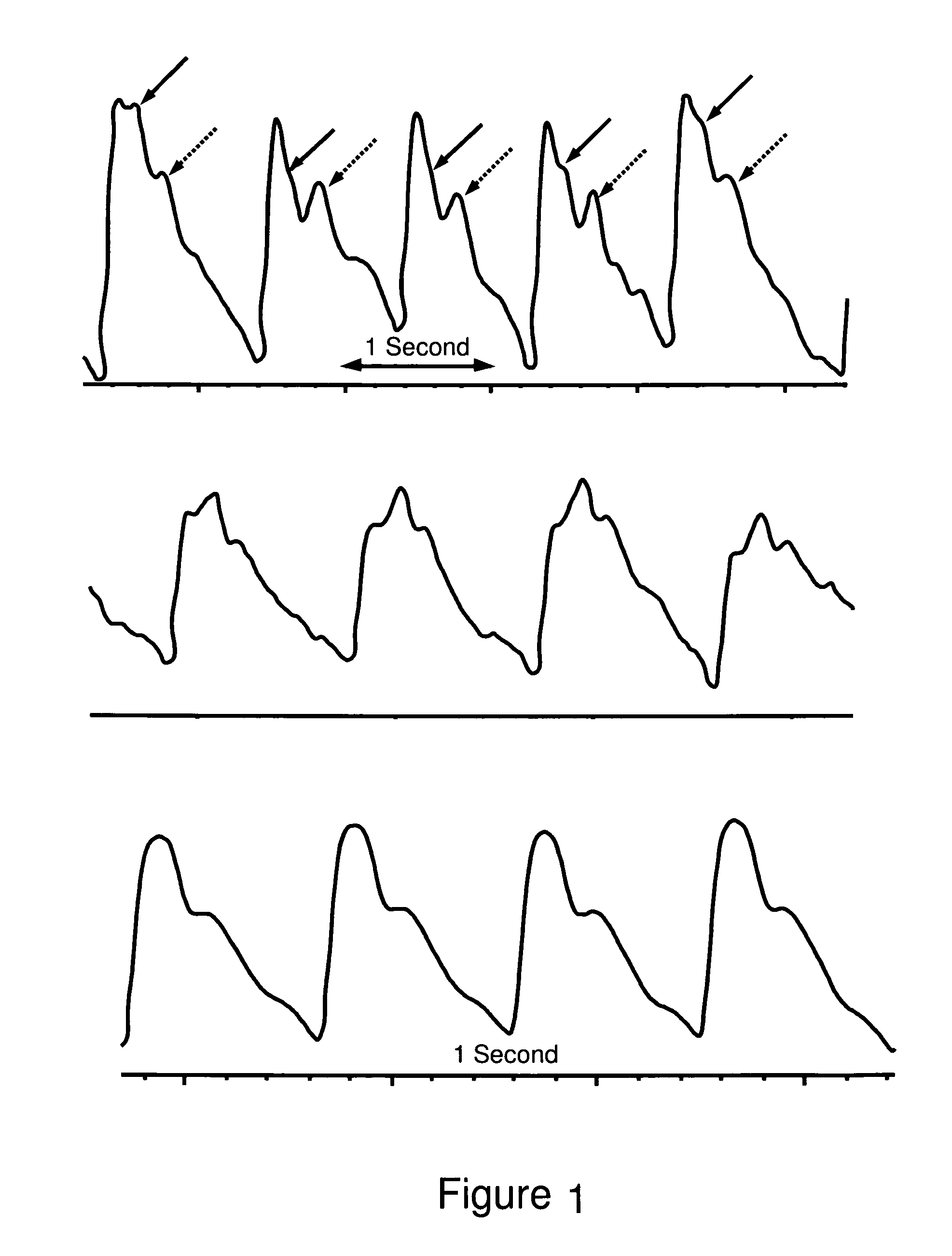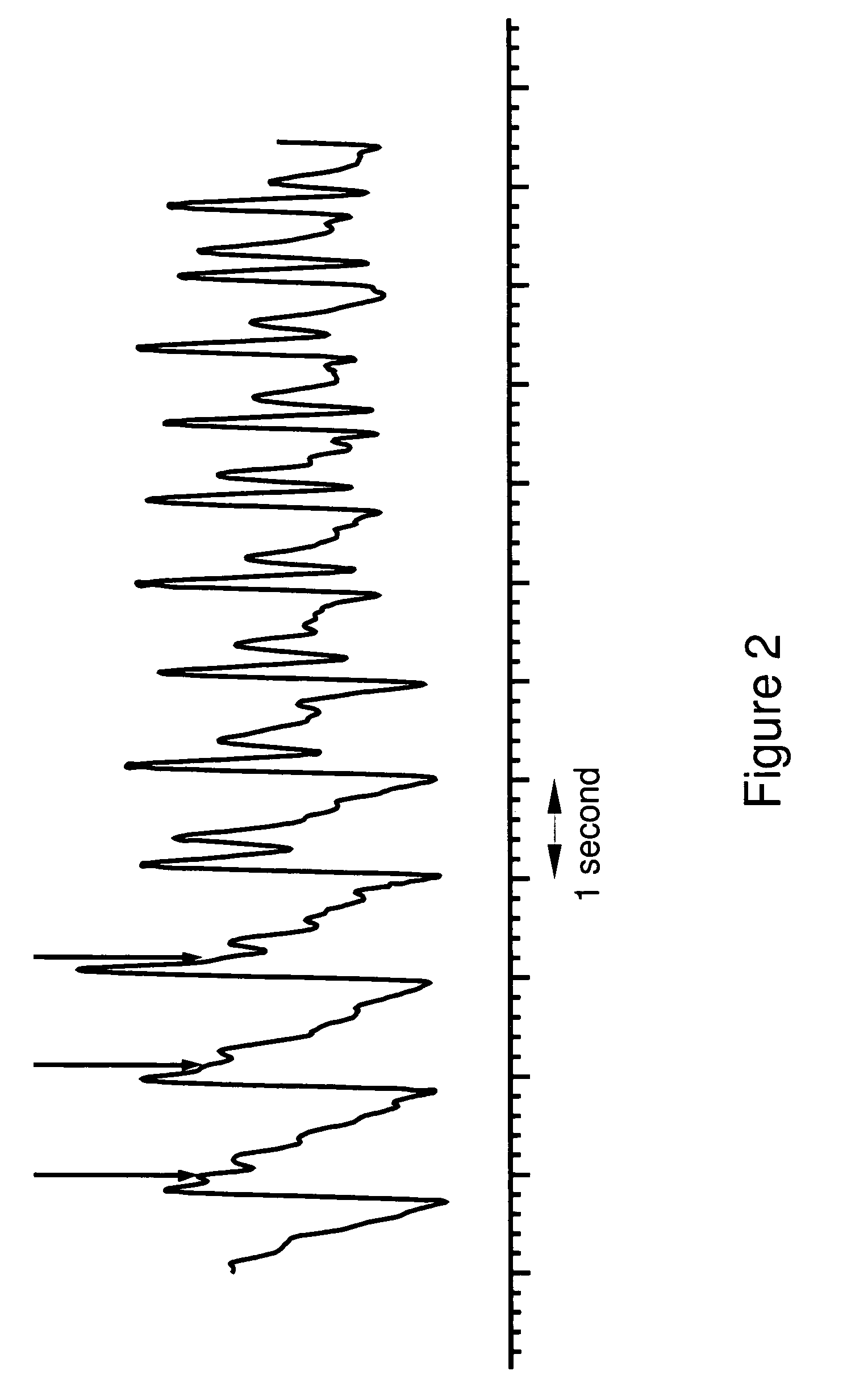Arterial pulse decomposition analysis for vital signs determination
a technology of arterial pulse and vital signs, applied in the field of blood pressure measurement, can solve the problems of hand numbness, hand numbness, and wearer experiencing additional discomfort, and achieve the effect of less complexity and lower cos
- Summary
- Abstract
- Description
- Claims
- Application Information
AI Technical Summary
Benefits of technology
Problems solved by technology
Method used
Image
Examples
Embodiment Construction
Definitions
[0042]Where the definition of terms departs from the commonly used meaning of the term, applicant intends to utilize the definitions provided below, unless specifically indicated.
[0043]For the purposes of the present invention, the term “plethysmograph” refers to an instrument that measures variations in the size of an organ or body part on the basis of the amount of blood passing through or present in the part.
[0044]For the purposes of the present invention, the term “Valsalva episode” or “Valsalva maneuver” refers to the expiratory effort when the mouth is closed and the nostrils are pinched shut, which forces air into the eustachian tubes and increases pressure on the inside of the eardrum, and to the expiratory effort against a closed glottis, which increases pressure within the thoracic cavity and thereby impedes venous return of blood to the heart. Essentially, Valsalva maneuver is any attempted exhalation against a closed glottis or against a closed mouth and nose....
PUM
 Login to View More
Login to View More Abstract
Description
Claims
Application Information
 Login to View More
Login to View More - R&D
- Intellectual Property
- Life Sciences
- Materials
- Tech Scout
- Unparalleled Data Quality
- Higher Quality Content
- 60% Fewer Hallucinations
Browse by: Latest US Patents, China's latest patents, Technical Efficacy Thesaurus, Application Domain, Technology Topic, Popular Technical Reports.
© 2025 PatSnap. All rights reserved.Legal|Privacy policy|Modern Slavery Act Transparency Statement|Sitemap|About US| Contact US: help@patsnap.com



